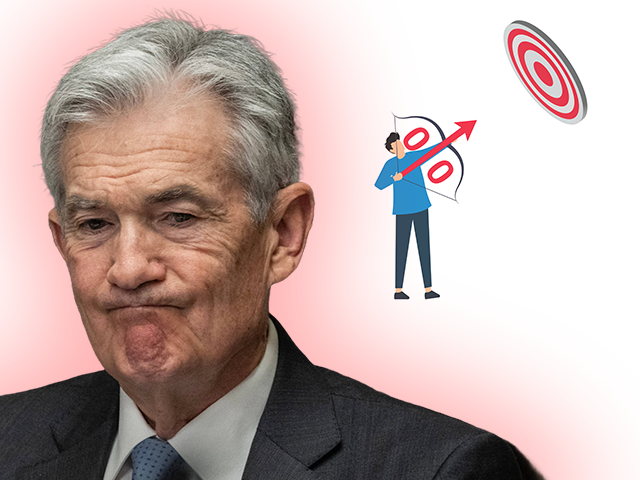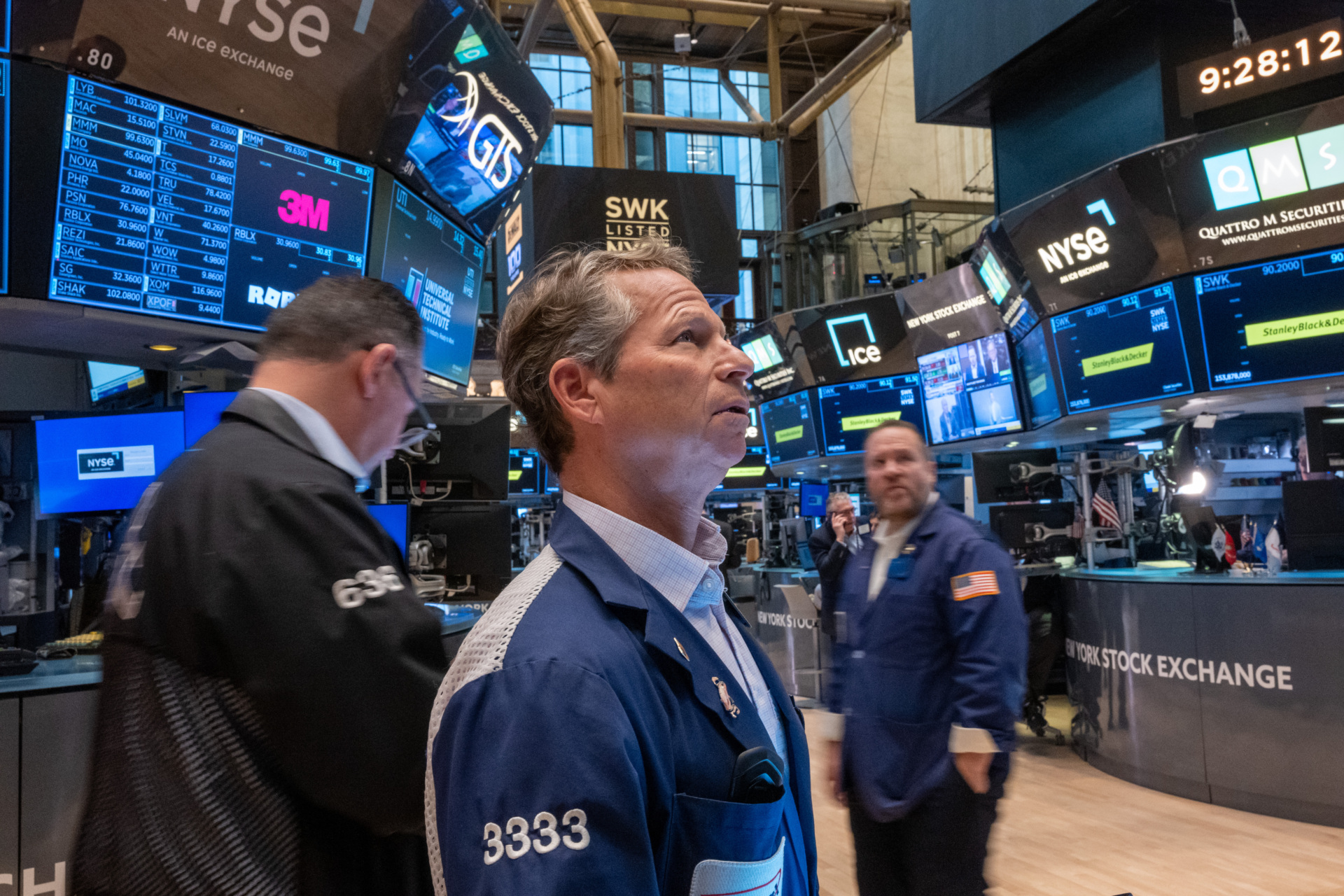Breitbart Business Digest: Powell Still Won't Admit Rate Hikes Might Be Coming
 iStock, Andrew Caballero-Reynolds/Getty Images; BNN
iStock, Andrew Caballero-Reynolds/Getty Images; BNN
Powell Promises to Stay High
Federal Reserve Chair Jerome Powell recently took the stage in Amsterdam Tuesday with a message that seemed at once resolute and uneasy: the Fed is no longer anticipating several rate cuts this year but is instead committed to keeping interest rates at their highest levels in over two decades.
Beneath Powell's calm veneer lies a troubling reality— the Fed is unlikely to cut interest rates this year or even early next year. The inflation beast remains stubbornly untamed, as today’s producer price index (PPI) report grimly illustrates with a 0.5 percent month-over-month rise, equivalent to a 6.4 percent annual pace and much hotter than anticipated.
Unfortunately, Powell still stubbornly resists the idea that the Fed's next move may be a hike rather than a cut.
The Pivot Away from Imminent Cuts
Powell's shift in tone is telling. His once buoyant confidence in an imminent inflation decline has been replaced by a cautious approach. “We're just going to have to see where the inflation data fall out,” he said, a statement that smacks of both patience and a hint of resignation.
The year began with Fed officials awash in optimism. A few favorable inflation reports in late 2023 had stoked hopes that their inflation dragon would be subdued sooner rather than later. It seemed plausible that a couple more months of positive data would put them on track to meet their two percent inflation target and start cutting rates. But a string of worse-than-expected inflation reports in the first three months of this year forced the Fed to tear up the script and rewrite this year's plotline.
“We did not expect this to be a smooth road, but these were higher than I think anybody expected,” Powell admitted.
Powell insisted that interest rates are “by many, many measures” sufficiently high to slow demand, but there's very little evidence that this is actually happening. Consumer spending remains robust, and economic activity has outpaced expectations, as seen in the steady job growth and low unemployment rate. Home prices are rising. Corporate earnings have come in above expectations, helping the stock market climb ten percent in the first five months of the year. Meme stocks are headed the moon again.
Even Axios has taken notice, writing: “The fact that the ultra-speculative vibes are back raises questions about whether the Fed's policies are cooling down financial conditions — and, by extension, inflationary pressure — as much as advertised.”

Traders walk the floor at the New York Stock Exchange on May 14, 2024, in New York City. (Spencer Platt/Getty Images)
Most Fed officials have said they don’t foresee the need for further rate hikes, a sentiment Powell echoed. “I have said that I don’t think it’s likely based on the data that we have that the next move that we make would be a rate hike,” Powell said Tuesday.
The data tells a different story. The index of core personal consumption expenditure prices is up an annualized 3.0 percent over the past six months, a big acceleration from the 1.9 percent pace of the prior six months.
The upcoming Labor Department’s consumer price index (CPI) report for April will be crucial. Wall Street expects both headline and core CPI to rise 0.3 percent, a decline from the prior month's 0.4 percent increase. Given the sharp rise in gasoline prices in April and today's PPI report, with its unexpected 0.5 percent month-over-month rise, that may turn out to be too optimistic. The Cleveland Fed's nowcast has headline CPI rising 0.4 percent.
The Fed Triggered Inflation's Resurgence
The Fed's own forecasts may be to blame for re-awakening the sleeping dragon. In a recent piece for Fox Business, Key Square Group founder Scott Bessent argues that Powell's premature pivot towards lowering interest rates, which he likens to failing a “Marshmallow Test” of delayed gratification, led to an easing of financial conditions, triggering a resurgence in inflation.
“If only Powell had refrained from signaling rate cuts in December and stuck to the “higher for longer” script, the economy could have slowed sufficiently to allow actual rate cuts in the coming month,” Bessent writes.
We would add to this a point we've made several times at Breitbart Business Digest: the fact that Fed officials have consistently projected that eventually the federal funds rate will return to 2.5 percent or so has likely undermined efforts to tighten financial conditions. This promise that rates will fall and that today's level is a temporary high means that debt issued today will be able to be refinanced later at a lower rate in the not-too-distant future. A business looking at the average cost of debt over the life of project will be more likely to undertake an expansion than they would if it's managers thought rates might go higher or were just uncertain of the direction of rates.
Powell's insistence that we're already at the top of rates has a similar effect. It encourages economic activity and debt-fueled expansion because everyone from corporate treasurers to home buyers have been led to believe that rates are only going down from here and therefore any bonds issued or mortgages taken out today will be able to be refinanced at a lower rate tomorrow.
Ironically, by insisting that he doesn't anticipate a hike, Powell could be making a hike more likely. If Powell even hinted that a rate hike was a real possibility, financial conditions might tighten enough to make one unnecessary.
Source link

